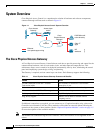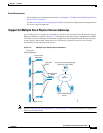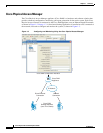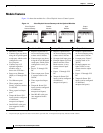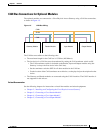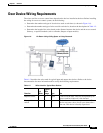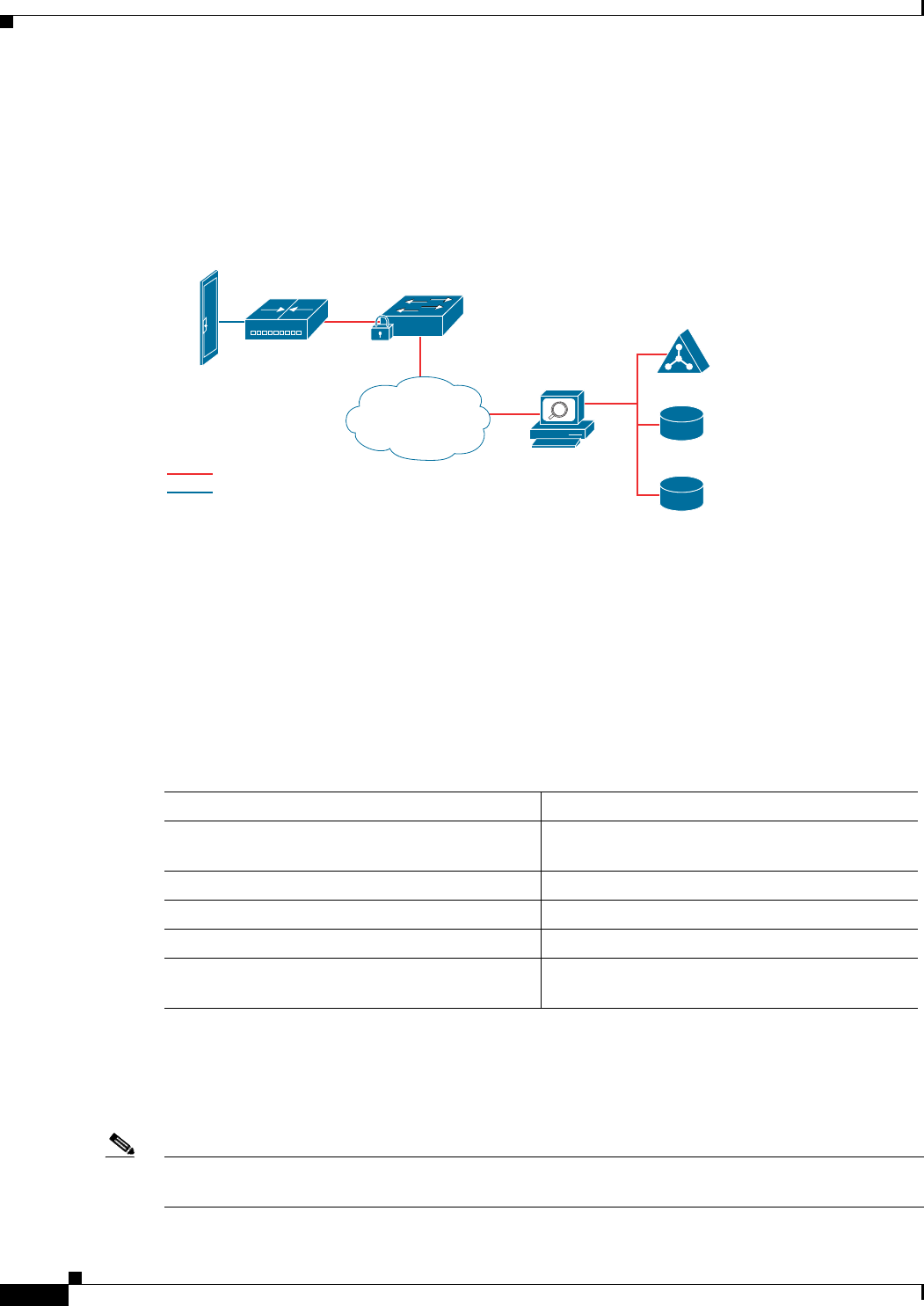
1-2
Cisco Physical Access Gateway User Guide
OL-20932-02
Chapter 1 Overview
System Overview
System Overview
Cisco Physical Access Control is a comprehensive solution of hardware and software components,
connected through an IP network as shown in Figure 1-1.
Figure 1-1 Cisco Physical Access Control: System Overview
The Cisco Physical Access Gateway
A Cisco Physical Access Gateway is installed near each door to provide processing and control for the
connected door hardware, such as card readers, locks, and other input and output devices. This
architecture allows access control to be deployed incrementally, door by door, eliminating the central
panel and simplifying system design, wiring, and planning.
The Gateway is required, and can control up to two doors. Each Gateway supports the following:
If additional connections are required, you can connect up to 15 optional modules using a three-wire
Controller Area Network (CAN) bus. These modules can be added or removed without affecting the
operation of the system or other modules. See the “Optional Expansion Modules” section on page 1-5
for more descriptions of the available modules.
Note The modules are connected using the CAN1 interface. The CAN2 interface is not supported in this
release.
Cisco Access
Gateway
Access Layer
switch
IP
Network
187055
Cisco
Physical Access
Manager
LDAP/Microsoft
active directory
Other IT
apps
HR
database
POE
Ethernet
Low speed copper wiring
Table 1-1 Cisco Physical Access Gateway Features and Benefits
Feature Benefit
250,000 cardholder cache and a 150,000
Transaction buffer
Door continues to function in case network
connectivity is lost
Web server built in Simplifies configuration and monitoring
All communication is128 Bit AES encrypted Protects credentials, preserves security
Device pre-provisioning using network services Simplifies deployment
Plug & Play support Modules can be added or deleted without
disrupting service











